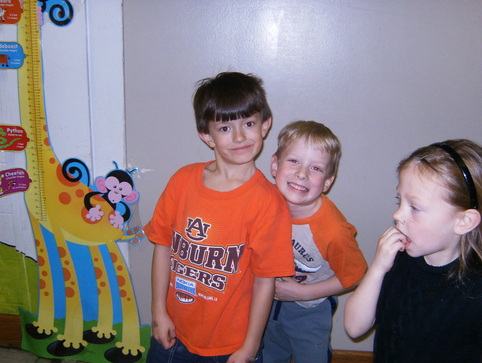A Reflection on Teaching My Addition Unit

The content of addition was chosen as a unit because mathematics is a subject that allows the teacher the opportunity to quickly assess whether or not students are learning the goal/objective for the day, and furthermore, the week. Because of quick feedback (which occurs by the teacher simply glancing at a students’ body of work), the teacher can quickly determine which students need remediation, further instruction, and/or a different instructional approach.
Kindergarten is primarily focused on helping students to achieve social, motor, and preliminary cognitive skills; thus, this addition unit incorporated a variety of cooperative learning groups/partners and manipulatives, each of which enabled the kindergartner to gain the knowledge of addition through the help of peers and concrete objects. For each lesson, students had an opportunity to work with counters, whiteboards, and other manipulatives in order for them to physically see how adding two groups of numbers together generates one larger group of numbers.
Because of the abundant use of hands-on manipulatives, and the timely feedback as to how I was teaching (was I getting the lesson objective across?), and the timely feedback as to how the students were learning, I thoroughly enjoyed teaching this unit on addition. The students enjoyed the use of whiteboards, jellybeans, goldfish crackers, fish pictures, rainbows, and dice, and their enjoyment of the lesson materials helped them to stay engaged and interested in the lesson. Furthermore, I loved seeing when a particular struggling student found that “a-ha” moment, in which they understood addition. This “a-ha” moment occurred several times throughout the weeklong unit on addition, and each time I witnessed this moment I felt so reassured in my teaching style, profession, and lesson.
Kindergarten is primarily focused on helping students to achieve social, motor, and preliminary cognitive skills; thus, this addition unit incorporated a variety of cooperative learning groups/partners and manipulatives, each of which enabled the kindergartner to gain the knowledge of addition through the help of peers and concrete objects. For each lesson, students had an opportunity to work with counters, whiteboards, and other manipulatives in order for them to physically see how adding two groups of numbers together generates one larger group of numbers.
Because of the abundant use of hands-on manipulatives, and the timely feedback as to how I was teaching (was I getting the lesson objective across?), and the timely feedback as to how the students were learning, I thoroughly enjoyed teaching this unit on addition. The students enjoyed the use of whiteboards, jellybeans, goldfish crackers, fish pictures, rainbows, and dice, and their enjoyment of the lesson materials helped them to stay engaged and interested in the lesson. Furthermore, I loved seeing when a particular struggling student found that “a-ha” moment, in which they understood addition. This “a-ha” moment occurred several times throughout the weeklong unit on addition, and each time I witnessed this moment I felt so reassured in my teaching style, profession, and lesson.
